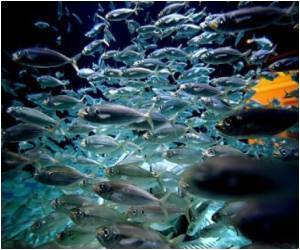
"If we could play God and create an undulatory swimmer, how stiff should its body be? At what wave frequency should its body undulate so it moves at its top speed? How does its brain control those movements?" Neelesh Patankar, professor of mechanical engineering at Northwestern's McCormick School of Engineering and Applied Science, said.
"Millennia ago, undulatory swimmers like eels that had the right mechanical properties are the ones that would have survived," he said.
The researchers used computational methods to test assumptions about the preferred evolutionary characteristics.
For example, species with low muscle activation frequency and high body stiffness are the most successful; the researchers found the optimal values for each property.
"The stiffness that we predict for good swimming characteristics is, in fact, the same as the experimentally determined stiffness of undulatory swimmers with a backbone," Amneet Bhalla, graduate student in mechanical engineering at McCormick and one of the paper's authors, said.
Advertisement
"We hypothesize that this would have been mechanically beneficial to the evolutionary emergence of swimming vertebrates," he said.
Advertisement
The researchers confirmed that the ability to swim, while dependent upon mechanical parameters, is not sensitive to minor generational changes; as long as the body stiffness is above a certain value, the ability to swim quickly is insensitive to the value of the stiffness, the researchers found.
Finally, making a connection to the neural control of movement, the researchers analyzed the curvature of its undulations to determine if it was the result of a single bending torque, or if precise bending torques were necessary at every point along its body.
They learned that a simple movement pattern gives rise to the complicated-looking deformation.
The findings are published in the journal PLOS Computational Biology.
Source-ANI







